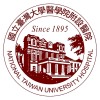
Autologous Bone Marrow Mesenchymal Stem Cell Transplantation for Chronic Stroke
StrokeStroke is one of the leading causes of disability in the world, and stem cell - transplantation provides a promising approach for rehabilitation. The main objective of this study is to evaluate the efficacy of the intracerebral injection of autologous bone marrow mesenchymal stem cells in patients with chronic stroke.

The Role of HMGB-1 in Chronic Stroke
Cerebrovascular AccidentCerebral Stroke2 moreThe purpose of this study is to measure the presence of HMGB-1 and other proteins in the blood across five time points after stroke, and to determine if their presence correlates with rate of stroke recovery.

Acute Effects of Whole Body Vibration in Chronic Stroke
StrokeWhole body vibration has been found to be useful in promoting bone health, balance, and muscle performance in older adults. The overall aim of the proposed study is to determine whether whole body vibration (WBV) has immediate beneficial effect in neuromotor performance in patients with stroke. It is hypothesized that a single session of WBV will induce significant improvement in leg muscle strength in people with chronic stroke.

Late LTP-like Plasticity Effects of tDCS in Subacute Stroke Patients
StrokeHemiparesisRationale: About 80% of stroke patients suffer motor impairments, but current therapies have limited effects on motor recovery. Therefore, investigating new potential therapeutic approaches is crucial. Transcranial Direct Current Stimulation (tDCS) is a form of non-invasive electrical stimulation where a weak current is applied through electrodes over the scalp. This stimulation is known to (1) induce changes in neuronal excitability -which can last up to one day with late LTP-like plasticity protocols in a polarity and site-specific manner, and (2) facilitate motor learning and stroke recovery. So far, several pilot studies have reported beneficial results from tDCS in both subacute and chronic stroke patients, but it's still unclear how tDCS should be repeated over multiple days to optimally enhance recovery and training effects. Using a late LTP-like plasticity protocol could increase effectiveness of standard clinical care rehabilitation sessions and thus enhance the effects of rehabilitation. Therefore, the investigators want to investigate how late LTP-like plasticity tDCS affects rehabilitation in subacute stroke patients. The outcome of this study can provide important guidelines on effective motor therapy during stroke rehabilitation. Objective: Identify the effect of late LTP-like plasticity on motor rehabilitation during the subacute phase after stroke. Study design: Double-blinded, randomized between-subjects trials. Study population: Subacute stroke patients. Main study parameters/endpoints: The primary outcome measure is the upper limb motor function during the subacute phase after stroke.

Effects of RAT in Sequential Combination With CIT in Stroke Rehabilitation
Cerebrovascular AccidentThe findings of this project will contribute to the understanding of a comprehensive probe for investigation of the effects of monotherapy versus combination rehabilitation intervention after stroke, including the topics of possible underlying mechanisms of motor recovery as well as the beneficial and adverse effects of intense rehabilitation therapy, prognostic factors of the outcomes, and clinimetric properties of the instruments. The overall findings of this project will be significant in the era of knowledge translation and guide the development of innovative and effective interventions for individualized stroke rehabilitation.

Investigation of the Use of Acupuncture for the Treatment of Spasticity in Chronic Stroke Participants...
StrokeThe purpose of this study is to investigate if acupuncture is more effective than sham treatment in reducing lower extremity spasticity, and improving gait speed in the chronic phase of stroke recovery.

The Effects of tDCS Combined With Balance Training on Postural Control in Chronic Stroke Patients...
Ischemic StrokePurpose: The incidence of stroke in low-to-middle income countries is increasing .Balance impairment and falling negatively impact function of stroke patients. Mobility is based on successful postural control and about 30% of individuals with stroke are unable to ambulate without assistance.Transcranial direct current stimulation (tDCS) is a new promising tool for motor recovery in neurological disease.This can be addressed through a tDCS intervention. Objective:The objectives of this study is to examine the efficacy of anodal tDCS combined with Biodex balance training on postural control in chronic stroke patients using laboratory and clinical assessments. The following essential treatment components; a) active tDCS stimulation paired with Biodex balance training, b)sham tDCS paired with Biodex balance training program. To identify combinations effects of tDCS stimulation plus balance training . Hypothesis: Anodal tDCS targeting leg motor area (CZ) for 5-days plus Biodex balance training, will significantly improve stroke clients' balance and functional mobility. Double blinded sham -controlled randomized tDCS stimulation Arms Assigned Interventions Experimental: Arm 1 tDCS brain stimulation and simultaneous balance training Participants underwent Active tDCS brain stimulation (20 minutes) and simultaneous balance training(20 minutes) for 5 consecutive days. No Intervention: Arm 2 Sham tDCS brain stimulation (20 minutes) and simultaneous balance training

The Effect of an Aerobic Exercise Programme in Stroke Patients
Cerebrovascular AccidentThis study aims to investigate the effect of aerobic exercise on the aerobic capacity, the daily functioning, post-stroke fatigue , depression and cardiovascular risk factors in stroke patients.

Navigated Transcranial Magnetic Stimulation in Monitoring Stroke Recovery
Ischemic StrokeThe past 10 years of research in persons more than 6 months post stroke have shown certain types of rehabilitation can help "re-wire" the brain. Transcranial magnetic stimulation (TMS) can be used to monitor this re-wiring by mapping the brain's function (measuring brain activity). Recent research suggests that TMS can be used for both prognosis (determining future function) and to determine what type of rehabilitation therapy will work best after stroke. The purposes of this research study are to: 1) determine changes in brain activity during the first 6 months after stroke (to determine how the brain "re-wires"); 2) compare changes in recovery of motor function with changes in brain re-wiring; 3) determine the ability of TMS to "predict" functional outcome in the first 6 months after stroke. The primary hypotheses are: 1) functional recovery will be correlated with TMS changes (as measure motor threshold (MT), motor evoked potentials (MEPs) and recruitment curves; 2) baseline TMS will predict future functional outcomes at 3 and 6 months.

Brain Computer Interface (BCI) Based Robotic Rehabilitation for Stroke
StrokeThe trial aims to test a novel rehabilitation device for subacute stroke hemiplegic upper limbs based on state-of-the-art non invasive Brain-Computer Interface (BCI) robotic rehabilitation in a clinical setting. The investigators aim to prove the clinical efficacy and safety of BCI therapy over traditional rehabilitation methods.
